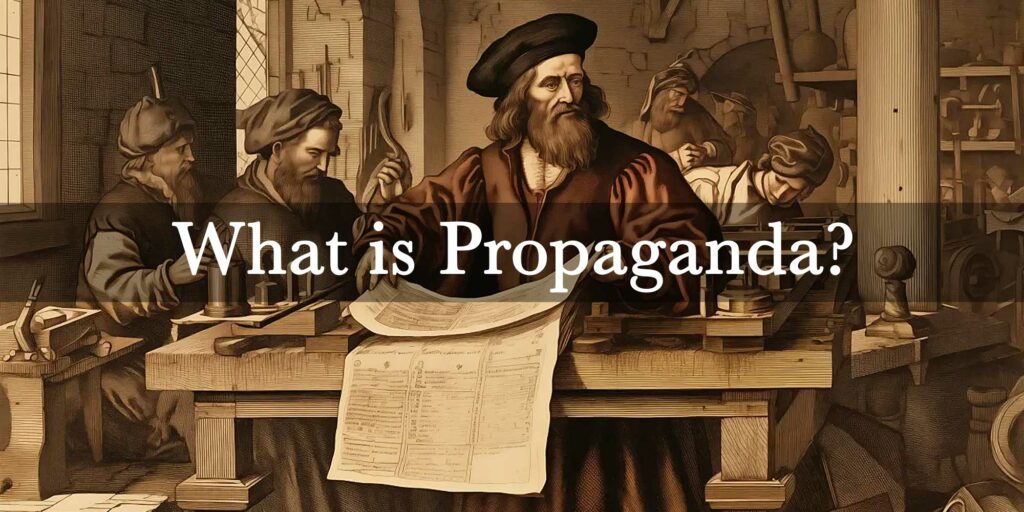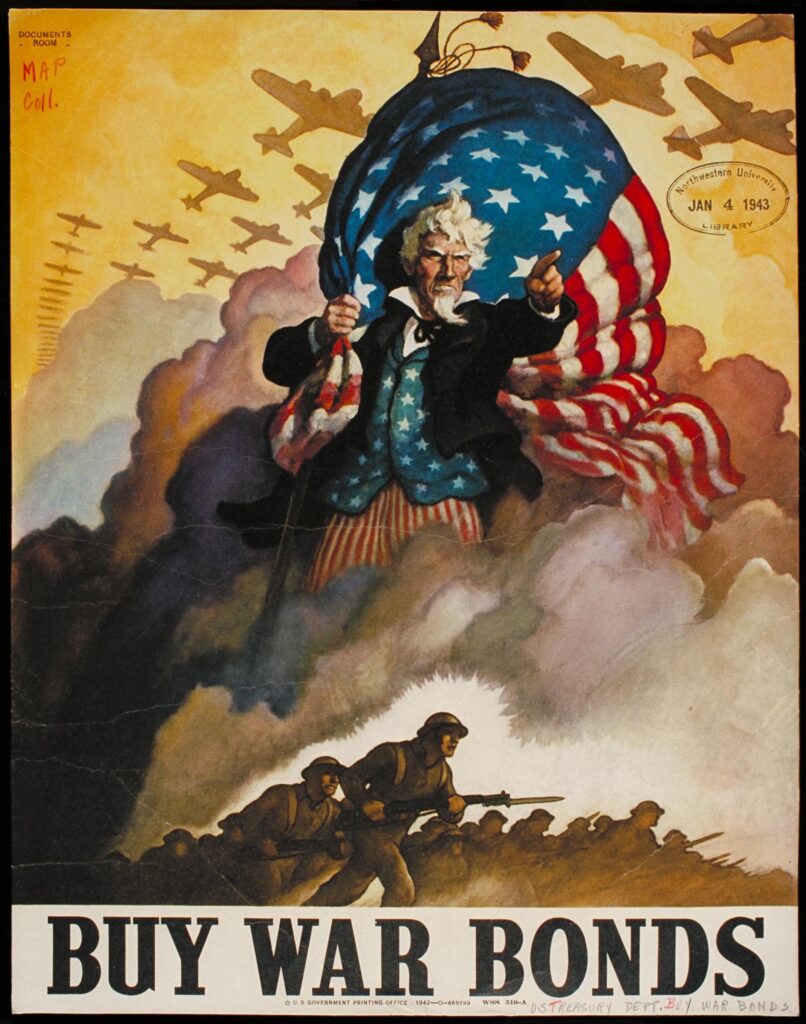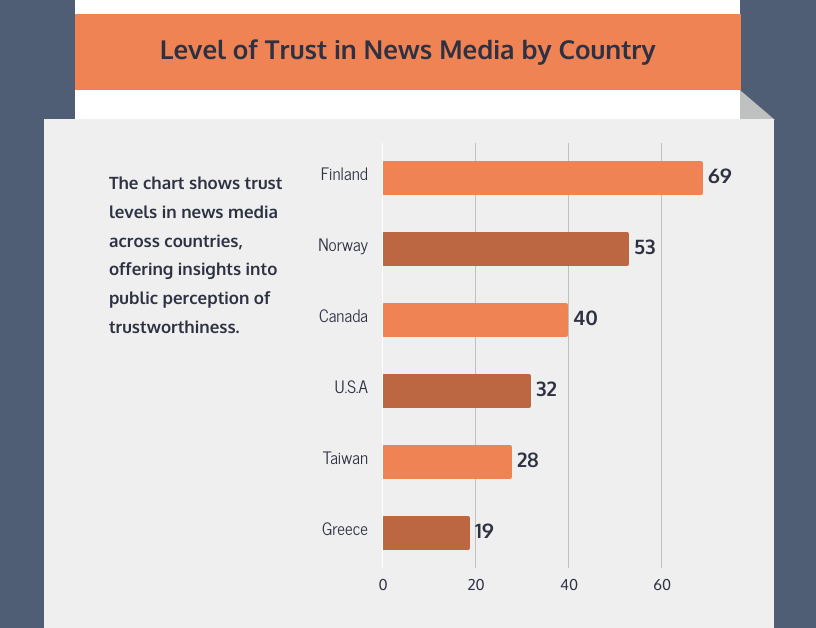What Is Propaganda? Marketing, Misinformation, and Reputation
Propaganda is disseminating information, rumors, or ideas to influence public opinion to further a particular cause or agenda.
It involves the selective display of facts, half-truths, or lies to sway people’s beliefs, actions, or attitudes. Propaganda can be used for many purposes, including political, social, or commercial goals, and can be channeled through various media, especially online.

This article will navigate through the historical evolution of propaganda, its mechanics, and delineate the subtle distinctions between public relations and propaganda. Furthermore, it will provide insight into examples of propaganda, spotlighting the role of social media propaganda, forms of propaganda, and the prevalent issue of fake news in sculpting public opinion.
Table of contents
- The Historical Evolution of Propaganda
- Understanding the Concept of Propaganda
- What is the Difference Between Publicity PR and Propaganda?
- Recognizing Propaganda in Modern Media
- Fostering Ethical Communication Practices
- FAQs
The Historical Evolution of Propaganda
Origins and Use in Ancient Civilizations
Propaganda has been a strategic tool since ancient times, influencing public opinion and supporting religious or war efforts. In ancient Greece, it was used to sway public opinion on political and religious matters, even without modern communication tools. The Stele of Hammurabi and the monumental inscriptions by Emperor Augustus are prime examples of early propaganda, utilizing art and law to mold public perception and assert divine approval.
Development Through World Wars
The use of propaganda intensified during the World Wars. World War I saw extensive use of emotionally charged posters and other media to recruit soldiers and boost national morale. By World War II, the techniques had evolved, with nations like Nazi Germany using powerful media tools to promote their ideologies and demoralize enemies. The Allies countered with their own propaganda efforts, emphasizing the moral high ground and the necessity of total war.

Origins of Modern Propaganda
- Early Pioneers: In the early 20th century, PR experts like Edward Bernays and Ivy Lee developed techniques to shape public opinion. Bernays, known as the “father of public relations,” used propaganda to help corporations influence public behavior and opinions during times of labor unrest, urban growth, and the rise of mass media.
- Ivy Lee’s Tactics: Lee introduced the “Declaration of Principles” in 1906, aiming to portray companies like Standard Oil positively despite public criticism. This marked the beginning of systematic corporate propaganda
Transition to the Digital Era
Modern techniques include using social media for astroturfing and spreading fake news, often blurring the lines between genuine information and manipulative content. The integration of artificial intelligence in creating hyper-realistic disinformation campaigns which further complicates the public’s ability to discern truth, making propaganda more pervasive and influential than ever.
Fake News
- Prevalence: 23% of U.S. adults have shared fake political news online, whether knowingly (14%) or unknowingly (16%).
- Confusion: 64% of U.S. adults believe fake news causes significant confusion about current events and issues.
- Confidence in Detection: 39% of U.S. adults are very confident in their ability to recognize fake news, while 45% are somewhat confident.
Understanding The Concept of Propaganda
What is Propaganda?
- Definition: Propaganda (noun): The systematic dissemination of information, ideas, or rumors, often biased or misleading, to influence public opinion or promote a particular cause, ideology, or agenda.
- Purpose: While often associated with political realms, propaganda can be used across various sectors, from business to social movements, aiming to shape public opinion and behavior.
- Techniques: Often uses emotionally charged messages, selective presentation of facts, and repetition to ensure the message sticks.
Techniques and Strategies
Propaganda employs a variety of techniques aimed at manipulating public opinion by using socio-psychological research. These methods range from exploiting logical fallacies to abusive power tactics. Additionally, common strategies include ad hominem attacks, appeals to fear, and the bandwagon effect, all designed to influence individuals subtly yet powerfully.
Emotional Appeals vs. Rational Messaging
The effectiveness of propaganda often hinges on its ability to tap into human emotions, bypassing rational thought processes. Emotional appeals, such as fear or happiness, are juxtaposed with rational messaging that might use quantitative descriptors or factual statements. This blend of emotional and rational tactics also ensures a deeper impact on the audience’s perception and behavior.
Repetition and Omission for Influence
Repetition is a critical component in reinforcing messages and creating an illusion of a unanimous consensus. Conversely, omission, or ‘propaganda by omission,’ involves strategically excluding information to shape opinions subtly. This method can skew perceptions significantly, making it a potent tool in the arsenal of a propagandist.
What is The Difference Between Publicity PR and Propaganda?
In the realm of shaping public opinion and influencing mass perception, propaganda and public relations (PR) emerge as two powerful yet distinct tools. While both aim to communicate and persuade, their core intentions and methodologies diverge significantly.
Definitions and Core Objectives
Propaganda is characterized by its intent to manipulate and control public opinion, often employing misleading information and emotional appeals to advance a specific agenda. In contrast, PR seeks to foster a positive image and build trust through transparent and ethical communication practices. Also, PR aims to establish and maintain beneficial relationships between organizations and their audiences, prioritizing mutual understanding and respect.
Ethical Considerations in PR
The ethical landscape in PR contrasts sharply with the manipulative nature of propaganda. PR professionals adhere to strict ethical standards, promoting transparency and accountability in their practices. Unlike propaganda, which may spread misinformation to achieve its ends, PR upholds the integrity of information, ensuring that communication is both accurate and respectful.
Use of Truth and Transparency
Transparency is a cornerstone of public relations. Effective PR practices demand honesty in the dissemination of information, making clear the intentions behind communication efforts. This openness is essential in building and maintaining public trust—a stark contrast to propaganda’s often covert operations designed to deceive and manipulate public perception.
By navigating these distinctions, PR professionals can uphold the values of ethical communication and contribute positively to the informational landscape, distinguishing themselves from the deceptive tactics associated with propaganda.
Similarities Between Propaganda and PR
Public Relations (PR) and propaganda, while inherently different in their goals and applications, sometimes employ overlapping techniques. Both work to shape perceptions and influence public behavior, but their intentions and the authenticity behind their messages can vary drastically.
- Crafting a Narrative:
Both PR and propaganda aim to tell a story that resonates with their target audience. While PR typically presents a company or individual in a positive light, propaganda pushes a particular agenda, sometimes at the expense of truth. - Emotional Appeals:
Emotional storytelling can be effective in both PR campaigns and propagandist materials. These campaigns rely on stories that evoke strong feelings—whether it’s pride, hope, fear, or empathy—to drive a response from the audience. - Use of Symbols and Icons:
Symbols carry power. Both PR and propaganda leverage recognizable symbols or icons to foster a connection or evoke a specific sentiment. - Selective Information Sharing:
PR may highlight the positive aspects of a product or situation, downplaying the negatives. Propaganda often takes this a step further by omitting inconvenient truths or distorting facts. - Repetition:
Repetition ingrains messages in the audience’s psyche. From brand slogans in PR to recurring themes in propaganda, the repeated message tends to stick.
Recognizing Propaganda in Modern Media

The Role of Social Media Platforms
Social media platforms have significantly amplified the reach and impact of propaganda. As noted, these platforms prioritize engagement, often at the expense of accuracy, leading to the rapid spread of misinformation.
The structure of social media is designed to capture attention, repeating content to reinforce messages, true or not. This environment is ripe for the dissemination of propaganda, with studies showing that false information on platforms like Twitter spreads faster than factual news.
Identifying Biases and Fact-Checking
To combat the spread of propaganda, it is essential to identify biases and undertake rigorous fact-checking. One should scrutinize sensational headlines, verify author credibility, and check the supporting links for authenticity. Additionally, understanding one’s own biases can help in evaluating information more objectively. Following that, fact-checking sites and librarians can be invaluable resources in this endeavor.
Critical Thinking and Media Literacy
Developing critical thinking and media literacy is essential in recognizing and resisting propaganda. Analyzing the source of information, the arguments presented, and considering multiple perspectives can empower individuals to discern truth from manipulation. This skill set enables users to navigate through the vast information available, making informed decisions about the content they consume and share.
Fostering Ethical Communication Practices
Promoting Transparency and Accountability
In the realm of public relations, fostering a culture of transparency and accountability is paramount. Organizations must commit to verifying the accuracy of information before dissemination and avoid the spread of unverified claims.
This practice not only maintains integrity but also builds trust with the audience. By implementing policies that require citing credible sources and acknowledging mistakes, PR professionals can uphold a standard of transparency that distinguishes ethical public relations from manipulative propaganda.
The Importance of Ethical Standards
Ethical standards in public relations are guided by principles such as veracity, non-maleficence, and beneficence. These standards ensure that communications are not only truthful but also considerate of their impact on the public. Public relations professionals must navigate ethical dilemmas by balancing these principles, often seeking external viewpoints to assess the implications of their actions on public perception and trust.
Encouraging Constructive Public Discourse
Encouraging constructive public discourse is essential in countering the negative effects of misinformation and fostering a well-informed public. PR professionals should promote media literacy and critical thinking, enabling individuals to critically evaluate sources and engage in respectful dialogue.
Establishing community guidelines that promote constructive exchanges and penalize disruptive behavior can significantly enhance the quality of public discourse, ensuring that it remains a powerful tool for education rather than manipulation.
FAQs
What Does Propaganda Mean in the Context of Public Relations?
Propaganda in public relations refers to a method aimed at altering people’s perceptions, attitudes, and actions through dishonesty, deceit, and animosity. Its goal is to gain public endorsement and approval while simultaneously encouraging the public to reject the opposition.
Can You List the Seven Types of Propaganda Identified by Social Scientists?
According to Alfred and Elizabeth Lee’s 1939 book, “The Fine Art of Propaganda,” there are seven primary techniques of propaganda. These include name-calling, glittering generalities, transfer, testimonial, plain-folk, card-stacking, and bandwagon.
How Does Propaganda Influence Public Relations?
Propaganda wields a significant influence in public relations by effectively molding public opinion and steering behavior. It leverages emotional appeal, frequent repetition, and selective information presentation to manipulate perceptions and beliefs.
How Do Propaganda and Publicity Differ Within Public Relations?
The main distinction between propaganda and publicity in public relations lies in their objectives and methods. Propaganda is a strategic campaign aimed at persuading people to adopt a specific viewpoint through persuasive tactics. In contrast, publicity focuses on spreading information, upholding a positive public image, and is continually promoted without the manipulative intent characteristic of propaganda.
